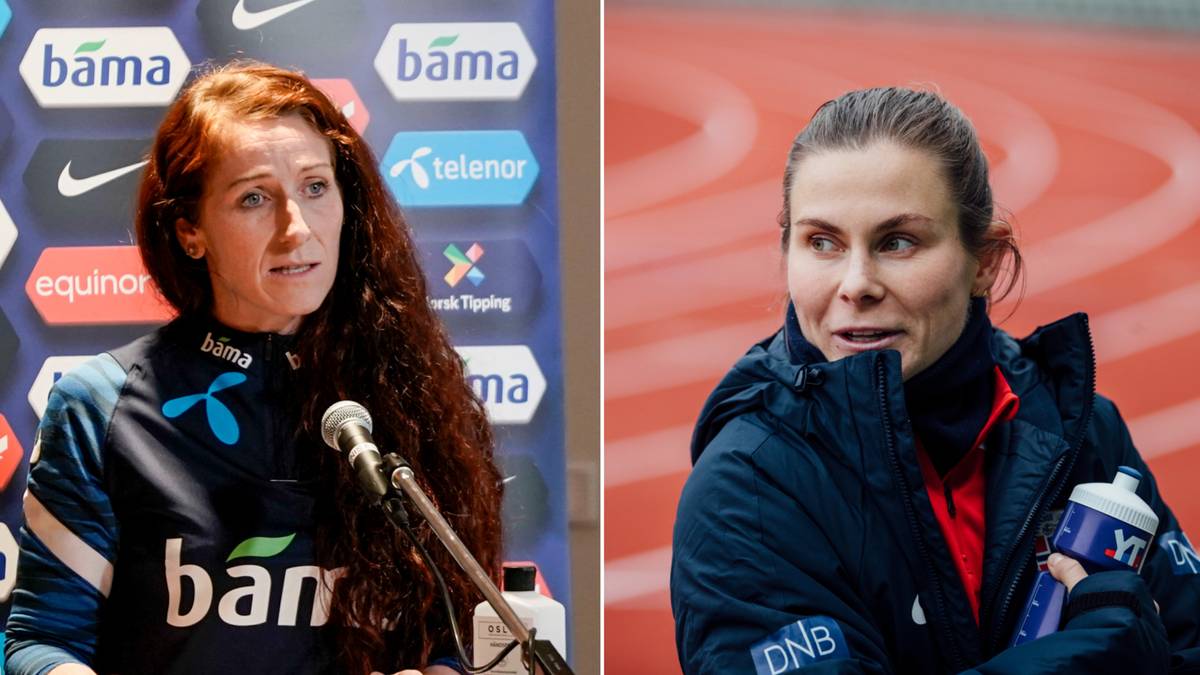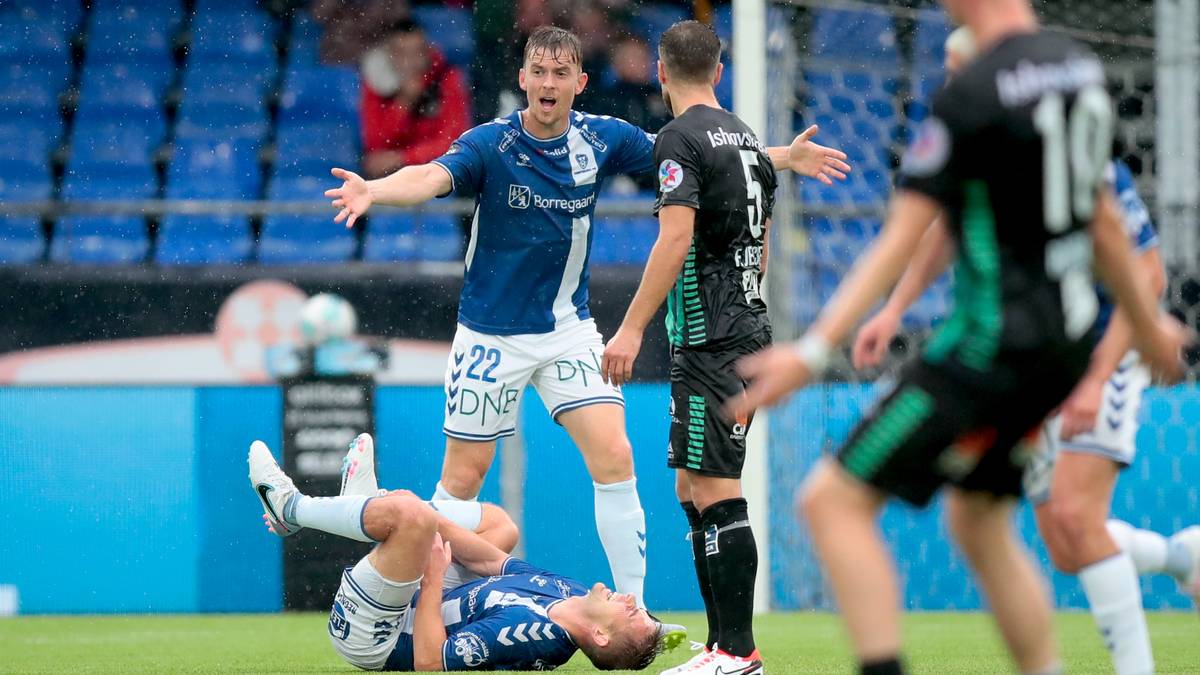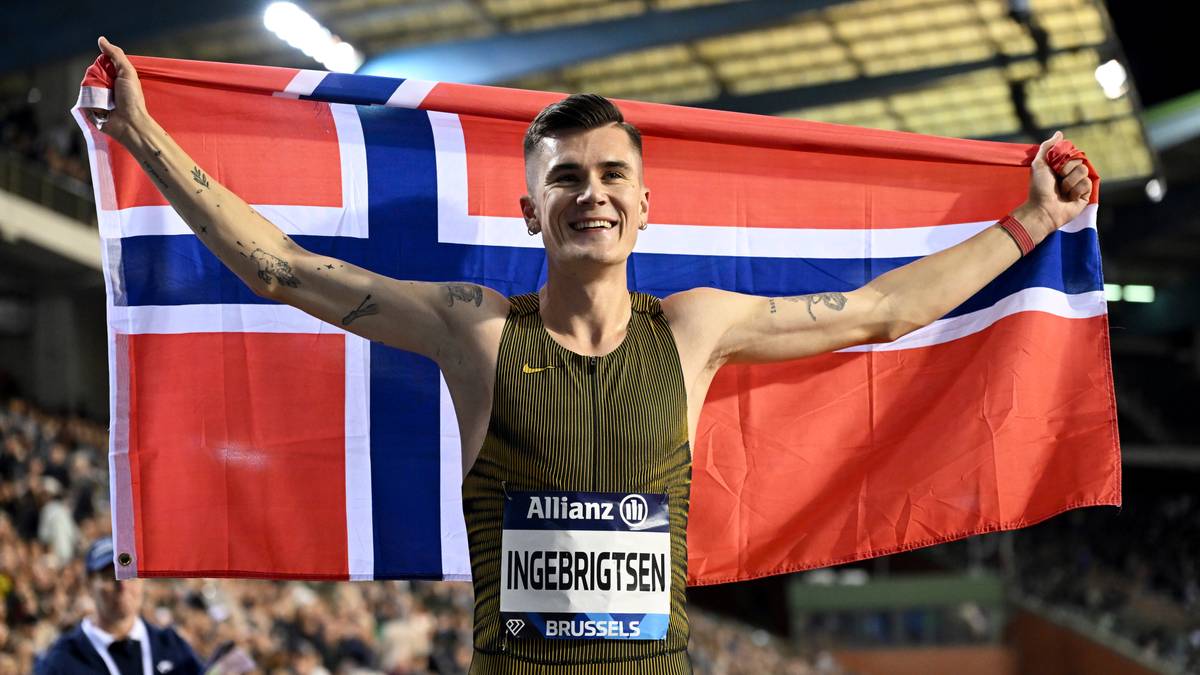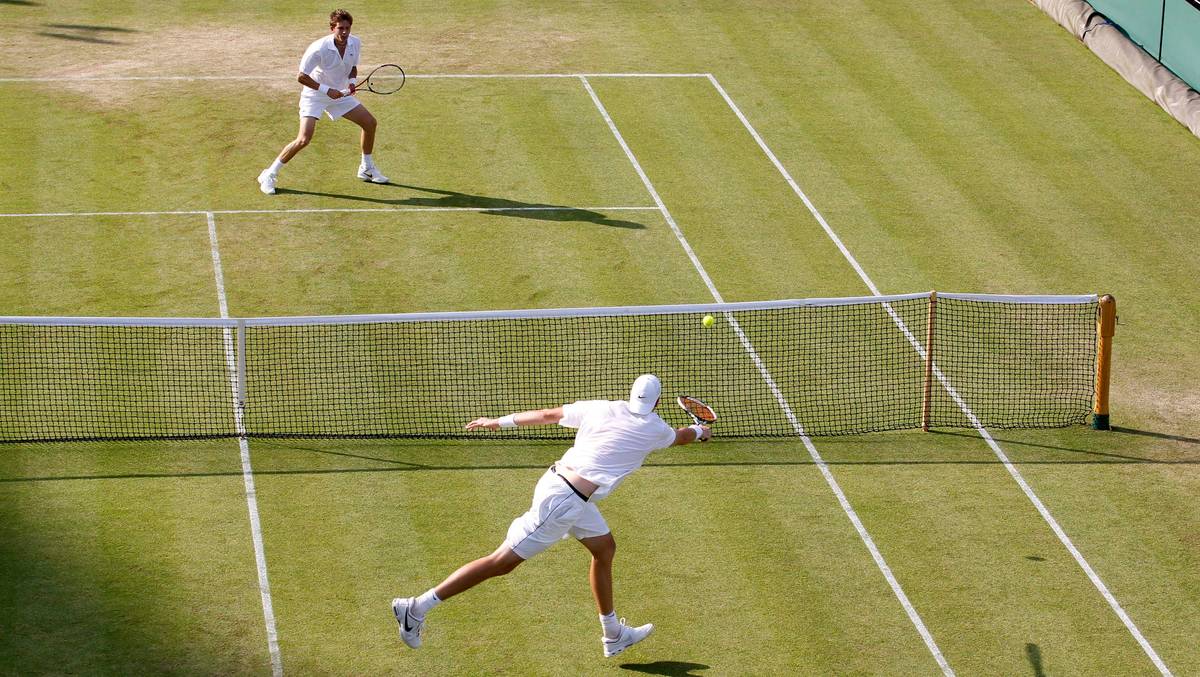– We want our sons and daughters to meet our people’s movement with mutual respect. But they don’t want that, they don’t want to feel so precious, says Lise Klaveness.
The football president was ready for a speech when NRK showed him the findings from the survey we presented on Sunday. Klaveness is well aware of this problem and believes it is time for a change.
– We can not live with the fact that we meet girls and boys in different ways, he said.
RESPONSE: President of football Lise Klaveness believes that we cannot live with differences for young talent in Norwegian football.
Photo: Frode Fjerdingstad / NRK
The NRK survey shows that Norway’s top-flight clubs spend an average of 42,000 kroner on female player development, while they spend 112,000 kroner on each male player.
– There is a skewed distribution that Norwegian football cannot realise, says Toppfotball’s female general manager, Hege Jørgensen.
The difference is most evident on the training pitch where each coach is responsible for an average of 17 players on the women’s team, whereas in the men’s team each coach is only responsible for eight players.
– I don’t think it belongs anywhere. We are aware that differences exist. The point is that it reproduces inequality when resources and competencies are so skewed, says Jørgensen.
– Not good enough
Those who have climbed to the top of football, the national team players, admit that they are not surprised by NRK’s findings.
– I think it’s really upsetting that young girls grow up without the same opportunities in sports as the boys in class do. If it was outside of sport and in society, it would not be accepted, says Emilie Haavi.

INHIBITOR: Haavi believes differences hinder development.
Photo: Fredrik Varfjell / NTB
Chelsea’s Maren Mjelde and Guro Reiten also thought it was unfair.
– I thought there should be an equal chance of success, and that’s definitely not the case. Or, we may already know that it’s neither, says Reiten.
Everyone is clear that the big difference at a young age has consequences for young talent.
– A coach in charge of 20 pieces, as opposed to being in charge of seven, eight, nine, ten players, fails to do the same. You’re going to get worse feedback and that’s going to be a bottleneck for development, says Haavi.
– They often don’t get the follow-up they should or should receive. You may be able to go to training sessions without being seen, while with boys you have three coaches with the same number of players. That’s not good enough, Mjelde said.

INVESTMENT: Mjelde believes that Norway should follow European investment.
Photo: Fredrik Varfjell / NTB
He believes that equating these differences is important for Norwegian football as well in a European context.
– If you look at women’s football in Europe today, it’s an insane amount of investment. On the younger ones too. That is what will be important for the future. “If we in Norway want to compete with Europe then we depend on bringing out these talents,” said the Chelsea player.
– Has been unconscious
Football is currently a sport in Norway that brings together mostly girls and Jørgensen believes it should be Norway’s competitive advantage.
He is the leader of interest organizations for clubs in the top two divisions in Norway. Their aim is to be the main driving force for the development of Norwegian women’s football.
– We have a strong culture for girls’ football at the grassroots, but they haven’t invested enough. This is due to the distribution policy that Norwegian football has maintained over the years. “I think there’s an unconsciousness around what made the skewed distribution what it is today,” he said.

CRITICAL: Toppfotball Kvinner general manager Hege Jørgensen believes that Norway cannot realize the unequal distribution in Norwegian football.
Photo: Frode Fjerdingstad / NRK
Jørgensen aims at distributing media money for development work at Norway’s top clubs coming through the so-called academy classification.
It is a tool that sets clear standards for work with the development of top players in men’s football. From 2017 to 2023, around NOK 300 million from Norwegian Top Football (NTF) and NFF media money will be invested in the development of youth players at top clubs.
At the same time, the top clubs of women’s football received 5.6 million from the NFF and Toppfotball Kvinner for the development of young players.
– We applaud the work done by the men’s club and the NTF. This is a fantastic job they have done. But the problem is only the difference gets so big when the NFF doesn’t manage to keep up with the good work it has done on the boys’ side. And then the economy has limited it on the women’s side, says Jørgensen.

“Infuriatingly humble coffee guru. Travel practitioner. Freelance zombie fanatic. Certified problem solver. Food scholar. Student.”





